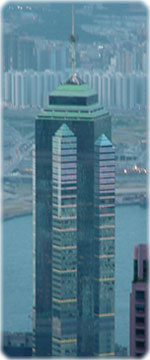Decision Makers 2010
Building Sustainability in a Globalized World
Conference
June 7-10, 2000, Hong Kong
Executive Summary
Program & Real Audio Presentations
Participants
Picture Gallery
Art Gallery
Word-Download: Executive Summary in German
|
Decision Makers 2010 Building Sustainability in a Globalized World Conference June 7-10, 2000, Hong Kong Executive Summary Program & Real Audio Presentations Participants Picture Gallery Art Gallery Word-Download: Executive Summary in German |
|||||
| |
Summary Working Group 3 Trilateral Disharmony and Conflict Resolution  Listen
also to the rapporteur William Drake Listen
also to the rapporteur William DrakeSummary (13:48 min) The focus of working group 3 was the question of how an integrated world can make the most productive use of enduring differences. Under the chairmanship of Professor Werner Weidenfeld, Director of the Center for Applied Policy Research and Ronnie Chan, Entrepreneur and Co-organizer from Hong Kong, the working group discussed trilateral disharmony and conflict resolution. Sources of conflicts Josef Janning, Deputy Director of the Center for Applied Policy Research kicked off the debate with a short presentation. He mentioned three sources of conflict as an input, such as demography (population growth), economy and natural resources of life. The output, he continued, is the handling of the existing and upcoming conflicts and disharmonies. The quality of conflict management is related to ideology, ethnicity and religion. On a world risk chart, Janning showed the group that the center of conflict is mainly the Southern Hemisphere, the Balkans, Russia, the Middle East and Asia. North America and Europe were regarded as rather stable areas. Key indicators for ranking Janning mentioned five indicators for the ranking of the world risk chart:
The Digital Gap  In
the next working session, Peng Er Lam,
Professor of Political Science at National University of Singapore and member
of the Roundtable and the Advisory Panel to the Government Parliamentary
Committee for Defense and Foreign Affairs gave a short kick-off [listen
to his presentation]. Lam emphasized the digital divide as emerging
trend for conflicts among societies. This conflict is the result of the
gap between individuals and organizations which are wired and such which
are not wired. In
the next working session, Peng Er Lam,
Professor of Political Science at National University of Singapore and member
of the Roundtable and the Advisory Panel to the Government Parliamentary
Committee for Defense and Foreign Affairs gave a short kick-off [listen
to his presentation]. Lam emphasized the digital divide as emerging
trend for conflicts among societies. This conflict is the result of the
gap between individuals and organizations which are wired and such which
are not wired."One way of anticipating the future is to see what our kids are doing today." Generation C The virtual state is different from the traditional nation state, as in a virtual state one creates new space, e.g. the new economy. The virtual state is characterized by the generation C (cyber generation), born in the post-Cold War era, and connected to the internet and the new economy ever since. The access to information and international trends in fashion, lifestyle and ideas increases exponentially. This generation is individualistic and global in outlook and behavior at the same time, and offers a new demographic basis for a more integrated world via information technology, travel, democratization and e-commerce. Lost Generation Especially in the aftermath of the Asian financial crisis, societal instability and personal difficulties (lack of education, medical care, child prostitution, etc.) are also leading to the emergence of a lost generation. This lost generation is living in a "warfare state", which means that they are trapped in intra-state and inter-state conflicts. These conflicts are class, ethnic, religious, regional and nationalistic "wars". This generation runs the risk of being cannon fodder for the military, the militias, authoritarian mass movements, cults and mobs. "Two nations between whom there is no intercourse and no sympathy; who are as ignorant of each other's habits, thoughts and feelings, as if they were dwellers in different zones or inhabitants of different planets...the rich and the poor" (Disraeli: Sybil, Book 2, Chaper 5, 1844) Two Worlds in 2010 The working group discussed the scenario of Two Worlds in 2010, the world of the Generation C and the world of the Lost Generation. The Generation C will enjoy the technological revolution and leads therefore to a productive use of enduring differences in fields of geography, technology, economy, travel and culture. The Lost Generation in comparison will have difficulties in surmounting the enduring differences of class, ethnicity, religion, race, regionalism, nationalism and human nature. Disparities and cleavages between two worlds, between two generations will lead to disharmony and conflict. The working group came to the result that despite a globalized world, the formulations for conflict management are diverse on a trilateral level, as there are different cultural backgrounds and therefore different perceptions of disagreement, disharmony and conflict. Executive Summary | Program |
||||
Project Background | Events | Reports and Essays Zukunftszeugen | Contact Us | Home Page Last Modified: 2002-04-23 TOP |
|||||